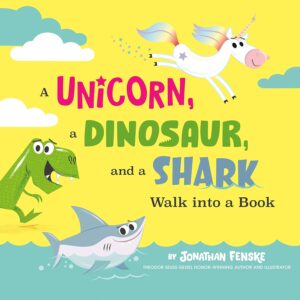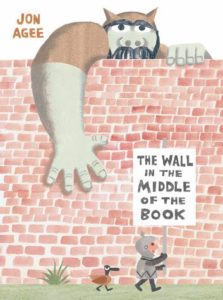Reaching for the Stars: A Mission to Space
Author: Roxanne Troup
Illustrator: Amanda Lenz
28 August 2024
Schiffer Kids
40 pages
Book description: “What will we find light-years away,
beyond the expanse where our planets play?
Join a diverse crew of young astronauts on an inspiring new mission to explore the moon, the stars, and the far reaches of outer space in an out-of-this-world journey sure to inspire the next generation of space enthusiasts to reach for the stars.”
Need some reviews of Reaching for the Stars?
As a bonus, here’s the story behind this story at kidlit author Lynne Marie’s website.
And here’s another bonus–the book trailer!
Reading Activities inspired by Reaching for the Stars:
- Before Reading–From looking at the front cover:
- Look closely at the cover—what makes you curious about the astronauts and their mission just by looking at the picture?
- Based on the title and cover, what do you think the astronauts will discover? What clues from the cover make you think that?
- Does the cover remind you of any other books or movies about space or astronauts? How do you think this one will be different or similar?
- The book title mentions a “mission to space.” What do you know about space missions or space exploration already? Have you heard of NASA’s Artemis program before?
- What do you want to ask the author or illustrator about space or their inspiration for creating this book before reading it?
- After Reading–Now that you’ve read the story:
- What did the astronauts discover on their mission? Which part of their journey was your favorite, and why?
- The book’s back matter mentions the NASA’s Artemis mission to land the first woman and person of color on the moon. How does that make you feel? Why do you think this is such a big deal?
- How did the rhyming text make the story more fun or easier to follow? Did the rhymes help you remember any specific space facts?
- The astronauts in the story spend time in their spaceship. What do you think life would be like living in space? What would you miss most about Earth?
- The illustrations mix real NASA images with drawings. How did the real photos make the story feel more exciting or real for you?
- What’s one new thing you learned about space, stars, or planets that you didn’t know before reading this book?
- If you had a friend who loved space, would you recommend this book to them? What part would you tell them about first?
- Design Your Own Space Patch: Astronauts have special patches that represent their mission. Create your own mission patch by drawing a symbol or picture that represents what your space crew would discover. Add colors and shapes that show your mission’s goals, just like NASA does!
- Moon Surface Adventure: Recreate the moon’s surface at home using pillows, blankets, and other materials. Pretend you’re an astronaut landing on the moon like the crew in the book. What do you see? What kinds of rocks or craters do you discover? Make notes or drawings of your “moon walk” in a journal.
- Constellation Discovery Map: The astronauts in the book spot famous constellations like Ursa Major and Orion. Can you find and map your own constellations? Use stickers or stars to create a “sky” on black construction paper, then draw lines to connect the stars into shapes and figures.
- Space-Themed Rhyming Poem: In the book, Roxanne Troup uses rhyme to tell the astronauts’ adventure. Write your own short poem about space using rhymes. You can describe a planet, a star, or even your dream space mission. Try to follow the same fun, rhythmic style as in the story.
- Create Your Own Planet: The book introduces the idea of discovering new planets in space. Design your own planet—what would it look like? What kind of animals or life forms might live there? Draw a picture of your planet and write a short description about what makes it unique.
- Further Reading: If you loved Reaching for the Stars, you might also enjoy other books about astronauts and space exploration.
 Annie has a big dream—she wants to be an astronaut. In this charming story, Annie prepares for Career Day and keeps everyone guessing about what she wants to be when she grows up.
Annie has a big dream—she wants to be an astronaut. In this charming story, Annie prepares for Career Day and keeps everyone guessing about what she wants to be when she grows up.
 This non-fiction picture book tells the story of NASA’s Curiosity rover and its mission to explore Mars. With stunning illustrations and engaging explanations, Curiosity brings readers closer to the excitement of space exploration and the real science behind discovering other planet.
This non-fiction picture book tells the story of NASA’s Curiosity rover and its mission to explore Mars. With stunning illustrations and engaging explanations, Curiosity brings readers closer to the excitement of space exploration and the real science behind discovering other planet.
This fascinating story tells how a young girl named Venetia Burney suggested the name “Pluto” for the newly discovered planet when she was just eleven years old.
 This inspirational story is based on the life of Mae Jemison, the first African American woman to travel to space. The book follows young Mae as she dreams of reaching the stars, despite being told her dream was impossible. A wonderful celebration of perseverance and diversity in space exploration.
This inspirational story is based on the life of Mae Jemison, the first African American woman to travel to space. The book follows young Mae as she dreams of reaching the stars, despite being told her dream was impossible. A wonderful celebration of perseverance and diversity in space exploration.
 Follow space-obsessed Rocket as she tries to get her whole neighborhood to stop and look up at an upcoming meteor shower.
Follow space-obsessed Rocket as she tries to get her whole neighborhood to stop and look up at an upcoming meteor shower.





 Too Much Glue
Too Much Glue
 Ada Twist, Scientist
Ada Twist, Scientist



 Elvis Is King!
Elvis Is King!
 Rock
Rock  Rock ‘n’ Roll Soul
Rock ‘n’ Roll Soul





 Who’s Writing this Story?!
Who’s Writing this Story?!











